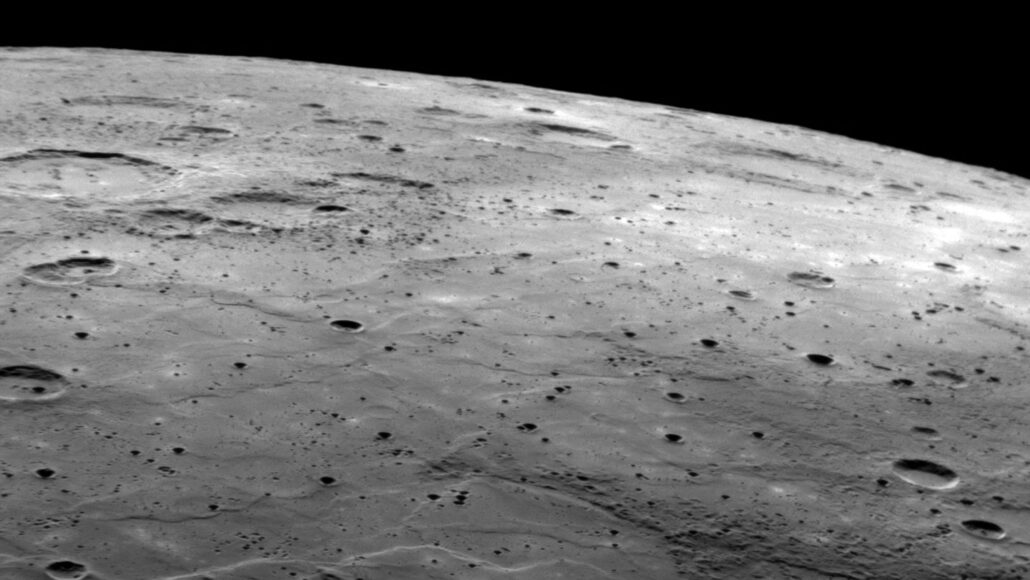Mercury’s surface may be studded with diamonds
Meteorites may have turned much of the planet’s graphite crust into precious gemstones

A barrage of meteorite impacts may have transformed some graphite on Mercury’s surface (pictured) into diamond.
NASA, Johns Hopkins University Applied Physics Laboratory, Carnegie Institution of Washington
By Nikk Ogasa
Diamonds may litter the surface of the planet orbiting closest to our sun.
Those diamonds could have been forged by space rocks pummeling Mercury for billions of years. The planet’s long history of being pelted by meteorites, comets and asteroids is clear from its cratered crust. Now, computer models suggest that those impacts may have had another effect. Meteorite strikes may have flash-baked about one-third of Mercury’s crust into diamond.
Planetary scientist Kevin Cannon shared that finding on March 10. Cannon works at the Colorado School of Mines in Golden. He presented his results at the Lunar and Planetary Science Conference in The Woodlands, Texas.
Diamonds are crystal lattices of carbon atoms. Those atoms lock together under extreme heat and pressure. On Earth, diamonds crystallize at least 150 kilometers (93 miles) underground. The gemstones then ride to the surface during volcanic eruptions. But meteorite strikes are also thought to form diamonds. Those impacts create very high heat and pressure that can transform carbon into diamond, Cannon explains.

Educators and Parents, Sign Up for The Cheat Sheet
Weekly updates to help you use Science News Explores in the learning environment
Thank you for signing up!
There was a problem signing you up.
With that in mind, he turned to Mercury’s surface. Surveys of that surface suggest it contains fragments of graphite. That’s a mineral made of carbon. “What we think happened is that when [Mercury] first formed, it had a magma ocean,” Cannon says. “Graphite crystallized out of that magma.” Meteorites slamming into Mercury’s crust could have later turned that graphite into diamond.
Cannon wondered just how much diamond might have been forged this way. To find out, he used computers to model 4.5 billion years of impacts on a graphite crust. If Mercury were coated in graphite 300 meters (984 feet) thick, the battering would have made 16 quadrillion tons of diamonds. (That’s a 16 followed by 15 zeroes!) Such a trove would be about 16 times Earth’s estimated diamond stockpile.
Simone Marchi is a planetary scientist who wasn’t involved in the research. He works at the Southwest Research Institute in Boulder, Colo. “There’s no reason to doubt that diamonds could be produced in this way,” Marchi says. But how many diamonds might have survived is another story. Some of the gemstones were likely destroyed by later impacts, he says.
Cannon agrees. But he thinks the losses would have been “very limited.” That’s because the melting point of diamond is so high. It exceeds 4000° Celsius (7230° Fahrenheit). Future computer models will include diamonds remelting, Cannon says. This could refine the estimated size of Mercury’s current diamond supply.
Space missions could also scout for diamonds on Mercury. One opportunity may come in 2025. Europe and Japan’s spacecraft BepiColombo will reach Mercury that year. The space probe could search for infrared light reflected by diamonds, Cannon says. This could reveal how glitzy the solar system’s smallest planet really is.







